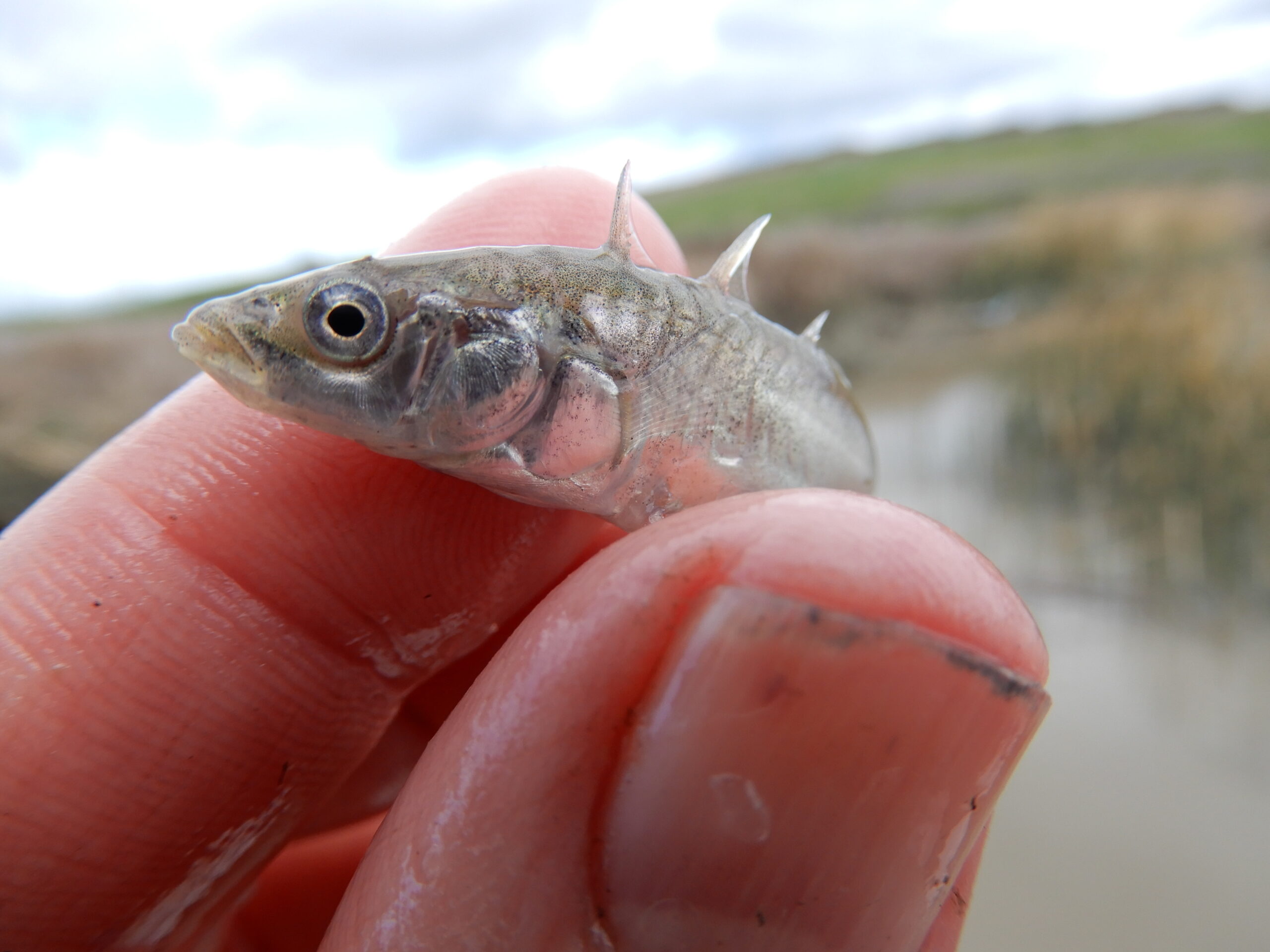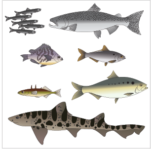
Name a native fish. One that spends lots of time in the Delta. One that’s not a salmon, smelt, or sturgeon. One whose population isn’t plummeting, and in fact seems to be doing just fine.
By now the list of possibilities has been shortened severely — though not exhausted. A number of native fish still ply Delta waters in stable numbers, but precisely because there are no restoration projects, monitoring programs, or conservation efforts designed to save them — or perhaps because they’re not game fish, or particularly large, or traditionally “charismatic” — theirs are not household names.
To the extent that they are recognized by the general public at all, some are even referred to, somewhat derisively, as “rough” fish: essentially, not a desirable catch. But they are winners in their own way, living reminders of a pre-development Delta, still playing an active role in this highly modified ecosystem.
Who are they, and more importantly, what’s their secret?
These small yet deep-bodied, often yellowish, barred fish are native to Clear Lake, the Russian River, the San Francisco Estuary, and the low-elevation rivers and streams of the Sacramento-San Joaquin watershed. Tule perch survival in the Delta seems to stem from a few key factors. They give birth to young that are like miniature adults, able to swim away immediately and to feed freely on the same food as their parents. They have a robust physiology as estuary dwellers that allows them to live in a range of salinities. Perhaps most critically, they eat invertebrates that are not favored by other fishes, particularly on the bottom and among the tule reeds, including some non-native amphipods.
“The fish don’t care, as long as it’s nutritious,” says Peter Moyle, distinguished professor emeritus at the UC Davis Center for Watershed Sciences. “It’s an abundant food source that not many other fish are exploiting.”
Dylan Stompe, a fisheries researcher and PhD student at Davis, notes that since tule perch can tolerate totally fresh as well as mixed-salinity water, the Delta population benefits from a stable source upstream in tributary river systems. “More fish are constantly getting fed into the system,” Stompe says. “I think that’s another thing that’s helped them.”
In addition to a name that tumbles off the tongue, prickly sculpin are fortunate to possess a devil-may-care attitude about housing. They’re happy as a clam in riprap, which lines much of the lower Delta, finding it a perfect place to live and spawn. They’ve also been seen living among old car bodies and other large boulders and stones.
“There’s a variety of invertebrates that live in that environment, and they’re less susceptible to predation when they’re in deep cover like that,” says Moyle, who somewhat famously once wrote that prickly sculpin will even use beer cans as nesting habitat.
Prickly sculpin can deal with a range of temperatures and salinities, including in rivers above the Delta. In fact, these adaptable fish are found up and down the Pacific Coast from Alaska to Southern California, and classified as a species of least concern. “They’re all over the place,” Stompe says.
U.S. Bureau of Reclamation biologist Brian Mahardja notes that prickly sculpin population trends in the Delta aren’t fully understood due to a lack of targeted monitoring. “But because their larvae are pelagic, and we do a lot of pelagic [open water] sampling,” he says, “we at least know that their larval numbers are still relatively high despite all the changes that have happened to the Delta.”
The tiny threespine stickleback, usually measuring about 1 to 1.5 inches in length, is commonly found in the Suisun Marsh. There it loves weedy tidal ponds, such as those produced by duck clubs, for both feeding and rearing.
The fish plays an interesting part in a novel foodweb in the marsh, which is populated by both native and non-native species, Moyle says. Sticklebacks happily feed on non-native plankton and are in turn an important food of non-native striped bass, which also eat non-native gobies. “These fish behave almost like they’ve been living together forever, even though this relationship is more recent,” Moyle says.
Beyond Suisun, stickleback can be found in decent numbers throughout the Delta and San Francisco Bay, Mahardja notes. In fact, the fish are so adaptable that they are of high interest to researchers studying evolution. “I see this species as being less dependent on the estuary and perhaps more resilient to climate change as a result,” he says.
Known for its fleshy or “swollen” lips, the slender Sacramento sucker, which can grow to almost two feet in length, is a long-lived benthic omnivore that hangs along the stream or channel bottom, where it feeds on algae, invertebrates, and detritus — “whatever is down there,” Stompe says.
Its success is further aided by productivity. In spring, suckers migrate upstream from the Delta to spawn — often in streams that are low or dry in summer, Moyle notes — and females can lay tens of thousands of eggs per spawning period.
Sacramento sucker populations in the Delta and Suisun Bay are also supported by a healthy base higher in the Sacramento River, which, as with tule perch, is perennially feeding fish back into the system.
And similar to stickleback, Mahardja suggests, Sacramento suckers’ lower reliance on the estuary itself may help it better withstand climate change and further modifications to the Delta ecosystem.
Of all the fish on this list, the Sacramento splittail, a large minnow, is most at risk. Though currently listed as a species of least concern by the International Union for the Conservation of Nature, it was previously classified as endangered. Similarly, Sacramento splittail were considered threatened by the U.S. Fish and Wildlife Service until 2003; in 2010 the agency ruled that the fish did not warrant protection under the Endangered Species Act. It is currently listed as a species of special concern by the California Department of Fish and Wildlife.
Sacramento splittail’s vulnerability lies in the fact that to reproduce it depends on the floodplain, a Delta habitat that has been heavily modified and largely lost. “When they’re ready to spawn they swim upstream and spawn on floodplains,” especially in the Yolo Bypass and the Consumnes River floodplain, Moyle notes. “Juveniles rear for a short period of time there, then they bail out when flood recedes, then head downstream to Suisun Marsh to grow up and repeat that lifecycle.”
The challenge for splittail, Stompe adds, is that since most historical floodplains in the Delta are gone, they’re reliant on big outflow events to create suitable reproductive habitat. “They need to be able to weather the bad years in order to have a spawning stock and produce a bunch more fish.” Climate change is likely to further challenge the fish through longer droughts and less frequent, more severe flood events.

No working Delta scientists specialize in studying these fish on their own, since the research money goes toward other species — imperiled fish, sport fish, problematic non-natives. What we know about their populations is gleaned from surveys targeting other fish, or, as in the case of the monthly Suisun Marsh Fish Study, now in its 42nd year, the entire community.
Though these five species don’t necessarily live together, looking at them as their own little group reveals common keys to survival. None are pelagic, or open-water fish, like Delta smelt; instead they spend their lives along the bottom or the shore. “There’s no decent water cool-water pelagic habitat left in the Delta,” notes Teejay O’Rear, a field supervisor in Moyle’s lab at Davis who leads sampling and data collection for the Suisun Marsh survey.
Another commonality is that they can tolerate different salinities and temperatures, allowing them to inhabit not only the estuary but also rivers and reservoirs, and rivers above the reservoirs. “Fish can tumble out of there and repopulate when conditions are right,” O’Rear says.
And finally, O’Rear adds, none are “domesticated” (raised in hatcheries) like many local salmon: “They actually know how to find food and how to evade predators and things like that.”
Granted, these fish likely aren’t as abundant in the Delta and upstream habitats as they once were. But they’re not in trouble as far as we can tell, either. Against all odds — despite the alterations to their habitat and a lack of focused efforts to protect them — they’re still hanging in there, in relatively good numbers. “They’re to be paid attention,” Moyle says. “They’re survivors.”
Top photo: Threespine stickleback. Photo: James Ervin
LINKS
